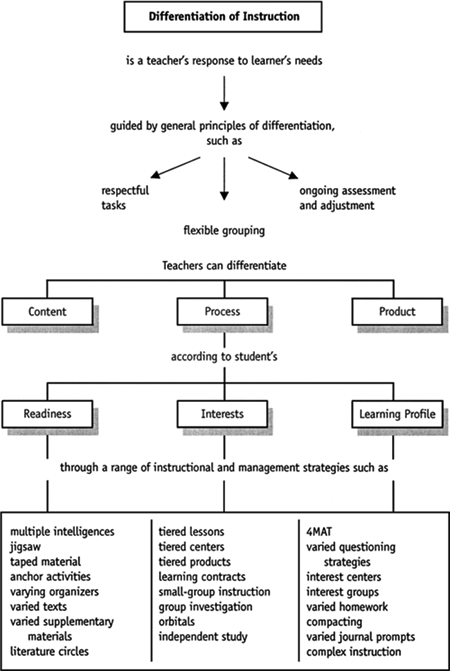When I began my inquiry, I did not know much about differentiated instruction. However, through literature, reflections, and observations I can now spot differentiation inside a classroom, and recognize the benefits of it. My first several blog posts focused on reading peer reviewed journals to form an understanding of what differentiated instruction was. In fact, if you scroll down to the bottom of my blog, you will see a lot of definitions of differentiated instruction, and the role of process, product, and content. Later, I began reviewing other sources that suggested how to use differentiated instruction inside of the classroom. These strategies included grouping students based on interest or level. Furthermore, many sources demonstrated the importance of choice, and the role of tiered assignments. By learning about these concepts, and familiarizing myself with what each strategy means, I was able to begin recognizing differentiation inside of my practicum classroom. It was through ongoing reflections that I was able to recognize differentiation, and come up with a list of strategies for myself to incorporate during my 10-week practicum.
Through ongoing observations and reflections, I now have a new and deep understanding of differentiation. I am in no way an expert at what differentiation is. In fact, I am a student teacher that hopes to incorporate differentiated instruction in my practice, as I believe that this is the best way for students to achieve their true potential. I do not see the relevance in providing all 30 students with the exact same quiz/assignment, when 4 of the students are at a lower level, and many other students are above the grade 5 level. Additionally, I hope to use technology in order to differentiate my instruction. There are several strategies that I will implement, such as the use of email and PowerPoint to meet the needs of my students (Kara-Soteriou, 2009, p. 87) Therefore, my goals as a student teacher will be to include several strategies of differentiated instruction. In doing so, I will be able to learn, first hand, what works, what does not work, and what I can improve on or change in my practice to meet the needs of my students.
To conclude, I wish to share a quote that I found during my inquiry research. “Every teacher who has entered a classroom has differentiated instruction in one way or another” (Levy, 2008, p. 162). However, not every teacher has gone above and beyond the everyday practice that entails differentiation. My research project has become a narrow focus on strategies to implement differentiation. Take a look at these strategies, read blogs and articles that highlight the key features of differentiation! These initial steps will broaden your perspective on differentiation. By opening your eyes to practices that meet the needs of diverse learners, you, in turn, will become a better teacher!
References:
Kara-Soteriou, J. (2009). Using technology to differentiate instruction across grade levels. Computers in the Classroom, 86-90.
Levy, H. M. (2008). Meeting the Needs of All Students through Differentiated Instruction: Helping Every Child Reach and Exceed Standards. Clearing House: A Journal of Educational Strategies, 81 (4), 161-164.
